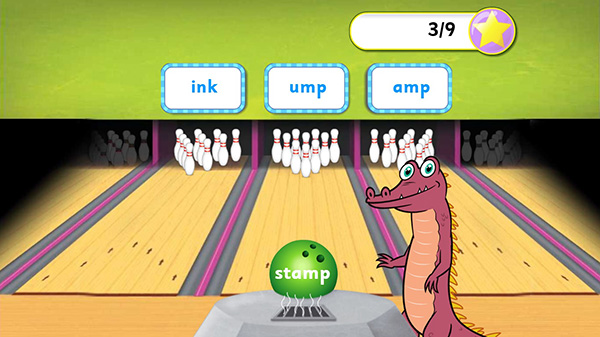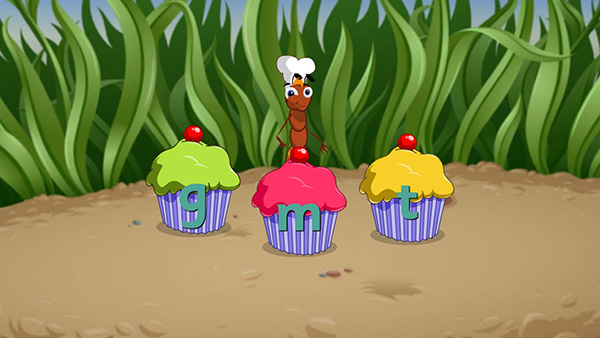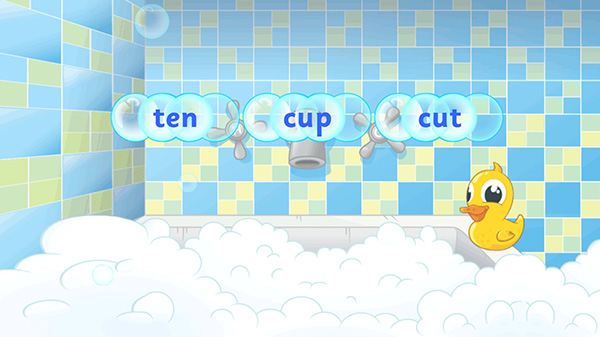Phonics and Reading: Nurturing Confidence from the Very Beginning

You've been there for their first steps, then their first words. Now watch your child embark on their journey to becoming a confident lifelong reader. Free trial
Reading is an extraordinary thing. It is one of the most important skills acquired in early childhood. And while it's distinctly unnatural, it forms an intrinsic part of our lives.
Reading is taken for granted by most of us, that is, until it's time to help our own kids learn to read. And if you're not a teacher or a literacy expert, it can be extremely difficult to know where to start.
There have been many methods of teaching children how to read in the past, but current best practice research promotes phonics in early reading programs.
Phonics is one of the five essential elements of learning to read, alongside phonemic awareness, vocabulary, fluency and comprehension.
What is phonics?
Phonics is a method of instruction that helps children learn and be able to use the alphabetic principle – the concept that words are made up of letters, and letters represent sounds.
Phonics instruction does this by teaching children to decode words by sounds – showing them how to make connections between the letters of written texts (graphemes, or letter symbols) and the sounds of spoken language.
One of the major difficulties children can have when learning to read is understanding phonics. Failure to grasp that printed symbols represent the sounds of spoken words makes it impossible to become a fluent reader.
Children who are unable to link letters to their sound(s) will struggle to read. Research shows that phonics instruction is essential for any program that aims to teach children how to read.
Without an understanding of the relationship between letters and sounds, the process of reading cannot occur.
How does Reading Eggs teach phonics skills?

Reading Eggs reinforces phonics skills by teaching letter‑sound combinations with one‑on‑one instructional lessons, games and e-books. Free trial
So now that we understand that phonics is the process of connecting the smallest units of sound (phonemes) with its corresponding letter/s (grapheme), let's have a look at how Reading Eggs helps to build key phonics skills in young children.
In Reading Eggs, children are taught the letters (graphemes) that represent the corresponding phonemes. They also learn to blend them together into words. For example, a child is taught to read the letters in a word like b‑a‑t, and then merge them to pronounce the word bat.
A phoneme can be represented by one, two, three or four letters (such as “ough” in “dough”).
Of course, there are some words that cannot be learned by breaking them into smaller parts. Children must learn them by sight, and these words are known as sight words. Learn more about sight words here.
Helping a child learn to read is complex, and it requires expertise. Since reading is such an essential skill for children to learn, it's important to get it right. Teaching reading should be guided by a solid scientific knowledge base, with support starting from home.
An instructional reading program like Reading Eggs that combines phonics, sight words and opportunities for regular reading practice, has been shown to be a highly effective way to help children learn to read. Try Reading Eggs for free today with a 30‑day trial.

Reading Eggs features highly engaging lessons that support young learners along their reading journey.
In Reading Eggs, each letter of the alphabet is introduced in its own lesson with a focus on reinforcing letter‑sound relationships and highlighting the alphabetic principle. Try a sample lesson of Reading Eggs here.
The sequence of instructional activities includes rhymes, alliteration, breaking words into syllables, phonemic segmentation and manipulation tasks.
The program is easy to follow and highly motivating for young learners, which encourages them to keep learning and improving from beginning to end.
Reading Eggs also builds other essential reading skills, alongside phonics
Here's how Reading Eggs teaches essential skills in phonics, phonemic awareness, vocabulary, fluency, spelling and comprehension (the five essential elements of learning to read):
- Comprises highly structured, systematic and sequential skills-based lessons and activities
- Offers an early and continued focus on phonemic awareness as well as grapheme-phoneme (letter-sound) correspondence knowledge
- Includes some lessons that teach children how to blend all the way through a word in order to read it

The highly engaging activities in Reading Eggs cover the five essential components of reading, including phonics and phonemic awareness.
- Teaches children how to segment words in order to spell them, and reinforces the connection between blending and segmenting with a variety of interactive games and activities
- Builds automaticity of a core list of high-frequency sight words
- Provides repetition of activities and re-reading of texts to build fluency
- Includes vocabulary activities that ensure reading for meaning is central.
How your child will benefit from Reading Eggs' phonics approach
Reading Eggs has been developed by a team of educators with over 30 years of experience.
The program teaches children to decode words into sounds and encode sounds into words. This happens within a wide range of activities that feel like a game. This way, young learners stay engaged and motivated as they practise.
As covered earlier, children begin by learning the appropriate sound for each letter of the alphabet, including letter combinations. Each letter of the alphabet is featured in its own lesson, and lessons build on one another systematically. By lesson 9, children are able to read their first book.
Each lesson ends with a book that matches your child's current reading ability, providing them with the thrill of reading on their own!

Reading Eggs is designed by experts to build your child's reading and phonics skills in a supportive and encouraging way, boosting their confidence at every step. Free trial
In the first 60 lessons of Reading Eggs, children read a variety of interesting and engaging books that use some of the words introduced and reinforced by the lessons.
The program responds to readers at their level of ability, making it possible for children to consistently read at their own individual level. This is extremely beneficial for their learning and overall confidence.
As well as working through the alphabet and the sounds that each letter makes, Reading Eggs also includes lessons on phonics skills such as working with beginning and end blends of letters, the variety of sounds that vowels make, diphthongs, consonant letter sounds such as soft c, g, and y, silent letters, double letter sounds, word families, and how to work through words with more than one syllable.
See how Reading Eggs works with a free trial
Not only does Reading Eggs use proven methods to build essential phonics and reading skills, the program is also so much fun! Children love playing the games and earning rewards as they learn and develop a real love of reading.
By using the Reading Eggs program, children learn to read in an enjoyable way. All of the lessons are embedded in game‑like activities that encourage children to play as they learn. When they succeed, they are rewarded with prizes, such as the golden eggs they receive at the end of each activity completed.
With the lessons being so fun, young readers enjoy spending time using Reading Eggs—and the more time they spend in the program, the more that they learn! It's what makes the program so successful in homes across 169 different countries.
See how Reading Eggs can help your child learn to read in just weeks. Start your free trial here today and join over 20 million users worldwide.

